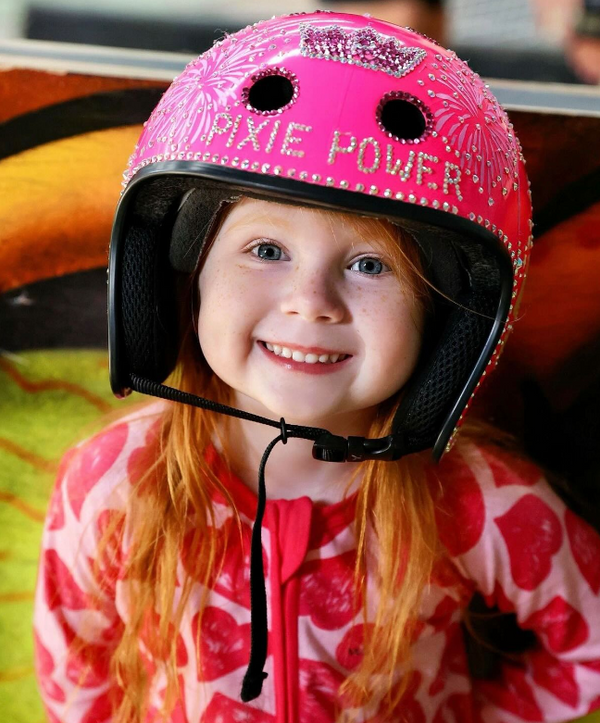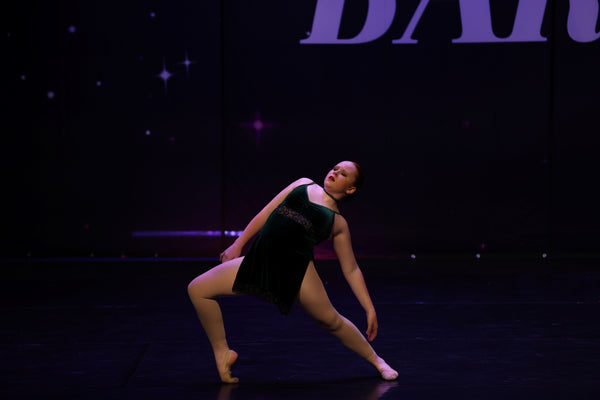Destined to SOAR.
This interview series is aimed at celebrating, recognising and promoting the incredible talent and ferocious courage of our young women of tomorrow.
Let's recognise the magnificent effort of girls'.
Today our interview is with Daisy Lacey, Soar Active had the privilege to catch up with Daisy and chat about her love for live and monkey-bars.
A brain tumour diagnosis wasn’t going to stop Daisy. This determined 10-year-old loves hanging around on the monkey-bars.
When Daisy Lacey was 5 years old, she started experiencing short sharp headaches and vomiting. Over the next 6 months, her parents, Stephen and Marianne, took her to nine doctors, including the family GP, a paediatrician and a paediatric neurologist where she was diagnosed with childhood migraine and told she’d have to learn to cope. However, Stephen, a self-confessed hypochondriac, and amateur medical buff, knew something didn’t add up. He studied up on the latest research about childhood migraine and realised Daisy’s headaches were way too short to fit the criteria for migraine. Plus, the fact they were happening on waking was a red flag for something far more sinister.
And so, in January 2018, Stephen and Marianne took Daisy to a radiography clinic for an MRI. The scan showed a huge peach-sized tumour at the back of Daisy’s brain on her cerebellum. The radiologist - a family friend – confessed it looked like a bad one.
The next day, Daisy underwent a six-hour operation at the Sydney Children’s Hospital, Randwick, where the lesion was successfully removed by neurosurgeon, Dr Saeed Kohn. However, it was a harrowing ten day wait for the pathology to come back. The tumour, a pilocytic astrocytoma, was benign.
Unfortunately, because of the tumour’s location and size, Daisy was left with a severe case of Posterior Fossa Syndrome; leaving her unable to talk, walk, or even feed herself. She spent three months in the neurology ward.
Over the past 5 years the syndrome is gradually resolving. Daisy started kindergarten in a wheelchair, and by the following year she had progressed to a walking frame. Nowadays, Daisy is a healthy 10-year-old who just loves to put on her Soar activewear and hit the gym.
1. Do you remember anything about your time in hospital?
Daisy: I only remember Dad wheeling me through the corridors, singing Lady Ga Ga. I know all the words to Bad Romance.
2. How did it feel being in a wheelchair?
Daisy: I only remember my brother, Henry, pushing me in the wheelchair in the100 metres race for the school athletics carnival, and we won. The next year I ran holding his hand. Last year I ran by myself and came last!
3. Tell us about your diet
Daisy: I’m the only vegetarian in the family. I love animals and wouldn’t want to eat them.
4. What are you favourite activities?
Daisy: Swinging on the monkey bars at the outdoor gym; I can go from one end to the other. I also like snorkelling with Bluey (the blue grouper) at Clovelly. It makes me feel really free. And I love horse riding; I just got back from a horse-riding week at Coonabarabran.
5. What makes you feel happy, brave, and strong?
Daisy: Looking back at old photos of myself in my Dad’s phone to when I couldn’t even move my body, and thinking about how far I’ve come.
6. What’s your favourite attribute about yourself?
Daisy: My blue eyes.
7. Tell us about a special moment in the last year?
Daisy: Modelling for Soar Active. It was such a fun day.
8. What’s your goal for 2023?
Daisy: To try not to be so shy.
9. What do you want to be when you grow up?
Daisy: A vet’s assistant, or a farmer with a house in the countryside. Or a writer like my dad.
10. What would you say to other young girls?
Daisy: Never ever quit.
_______________________________________________________________
Know another inspiring young teen or want to be featured?
Email us at hq@soaractive.com with your story.




